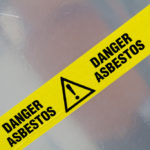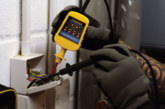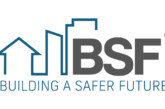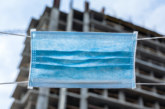With the 10-year anniversary of the Control of Asbestos Regulations (CAR) 2012 just around the corner, it is interesting to see how the UK asbestos industry has developed over the last decade.
In this edition of Asbestos Uncovered, we explore the role of the duty holder and the client when it comes to managing the risks of asbestos exposure, as well as reflecting on how these levels of responsibility have developed over the years in line with additional areas of legislation.
Who is responsible for the management of asbestos?
Regulation 4 of CAR 2012 stipulates that those who own, manage or have responsibilities for non-domestic premises must protect those who occupy or work in them against the risks posed by asbestos. This is known as the ‘duty to manage’, which translates as the legal duty to manage the risk or cooperate with whoever manages that risk.
The definition of ‘non-domestic premises’ includes industrial, commercial or public buildings such as factories, warehouses, offices, shops, hospitals and schools, and also includes common areas of domestic premises such as purpose-built flats. This generally comprises landlords, building owners and agents, all of whom are required to manage the level of risk.
Who is the duty holder?
According to CAR 2012, the duty holder is defined as the owner of non-domestic premises or an individual/organisation that has clear responsibility for the maintenance or repair of non-domestic premises. The extent of the duty holder’s duty to manage depends on the nature of the agreement for the building (such as a contract or tenancy agreement), with the identity of the duty holder dependent on the responsibility allocated to them.
The definition of a duty holder can include the leaseholder, owner or tenants and, in some cases, the employer or local authority. It can also include the client, designer, principal contractor and contractor. Furthermore, organisations or individuals can carry out the role of more than one duty holder, provided they have the skills, knowledge, experience and capability necessary to carry out those roles in a way that secures health and safety.
What is the level of responsibility required for the duty holder?
The duty holder will:
- Take reasonable steps to ascertain whether there are materials containing asbestos in non-domestic premises
- If present, determine the amount of asbestos, where it is and what condition it is in and ensure this is regularly updated
- Presume that materials contain asbestos unless there is strong evidence that they do not
- Assess the risk of individuals being exposed to asbestos on the premises
- Develop an asbestos management plan and take the necessary steps to implement accordingly
- Periodically review and monitor the plan and the arrangements to act on it when the plan remains up-to-date as premises change
- Provide information on the location and condition of the materials to anyone who is liable to work on/disturb them, such as employers or building contractors.
While the duty holder is predominantly responsible for the management of asbestos, any individual who has information on the whereabouts of asbestos on the premises is required to make this known to the duty holder. Those who are not duty holders but control access to the premises must cooperate with you when it comes to asbestos management.
What responsibilities do clients have when it comes to the management of asbestos?
When asbestos is removed from a property, the duty holder/client that has agreed to the works being carried out has the ultimate say on how the project is overseen/how the works are delivered. They are legally required to make appropriate arrangements to ensure that the project is managed safely, while also ensuring that the procedures enforced are maintained and reviewed throughout.
For example, under Sections 2 and 3 of the Health and Safety at Work Act 1974, clients must ensure the health, safety and welfare of their employees and any individuals who visit or may be affected by the works carried out on the premises. There are also legal requirements placed upon clients by the Construction (Design and Management) Regulations 2015, which set out what people involved in construction work need to do to protect themselves and anyone the work affects from harm.
As part of the CDM regulations, clients are required to appoint suitably competent individuals to carry out asbestos management or removal works, while also providing contractors with sufficient information, time and resources to carry out the job. They must ensure the following:
- That adequate welfare facilities are in place
- That adequate time and space is allowed for asbestos surveys to take place
- That an adequate plan is implemented for the works (e.g a written plan)
- That good communication and coordination is maintained throughout.
10 years on – what has changed?
According to the latest figures published in July 2021 by the HSE (asbestos-related disease statistics, Great Britain 2021), asbestos still poses a high risk in the UK:
It is thought that asbestos-containing materials can still be found in around 1.5 million UK buildings. It is still present in a range of different forms, including lagging on pipes and boilers, sprayed asbestos to beams and overspray in voids, asbestos cement in the form of roofing, wall cladding, guttering, pipes, water tanks and corrugated sheets, insulating boards and ceiling tiles, textured wall coatings, asbestos ropes and cloth. Often, it is either hidden or has not been identified as asbestos, which means that people are still being accidentally exposed to asbestos.
The Control of Asbestos Regulations 2012 are still the current legislation that duty holders must adhere to. The regulations set out your legal duties, while the ACOP and guidance notes give practical advice on how to comply with those requirements. They also provide the minimum standards for protecting employees from the risks associated with exposure to asbestos.
The regulations came into force on 6 April 2012, updating and replacing the previous 2006 law. They contain requirements for work with asbestos, as well as information on the notification of work, designating areas where you are working on asbestos, medical surveillance, record keeping and ongoing awareness training.
The Control of Asbestos Regulations 2012, the Approved Code of Practice (ACOP) L143 and guidance documents for employers informs duty holders about the requirements for safely managing work which disturbs, or is likely to disturb, asbestos. The regulations sets out legal duties, while the ACOP and guidance give practical advice on how to comply with those requirements. The regulations give minimum standards for protecting employees from the risks associated with exposure to asbestos.
HSG248 Second Edition
HSG248 is a series of guidance for analysts involved in asbestos work, deemed as the authoritative source of asbestos analytical and clearance procedures. The guidance has been updated and republished in July 2021 to take account of findings from HSE interventions and developments in analytical procedures and methodology. It provides clarification on technical and personal safety issues, especially in relation to sampling and 4-stage clearances. New information on sampling soils for asbestos is included.
In summary, since the issue of the CAR 2012, though information and training for the duty holder have improved, asbestos still poses a high risk. The role of the duty holder is as important today as it has ever been, and we still need to proactively manage asbestos in our buildings through identification, accurate record keeping, providing the correct information to the people entering and working in our buildings and continued education, all of which reduce the risk of accidental exposure to asbestos.
How can SOCOTEC support duty holders and clients with asbestos management?
SOCOTEC’s Asbestos team is best placed to support your testing and compliance requirements when it comes to asbestos management, taking a client-focussed approach to ensure that all of your specific business needs are met.









